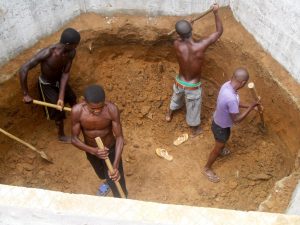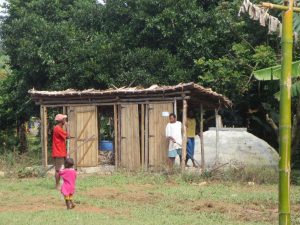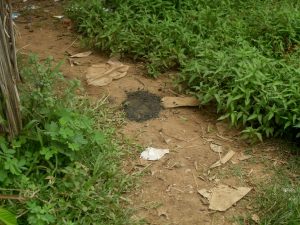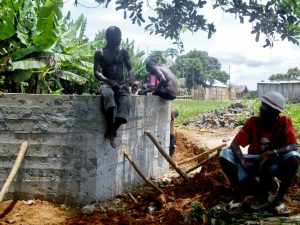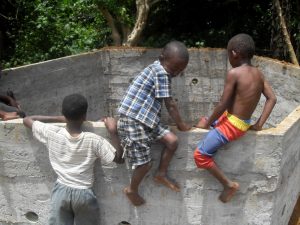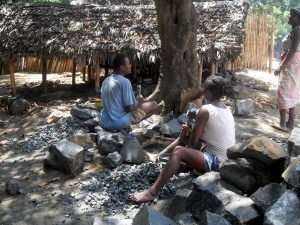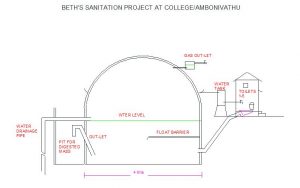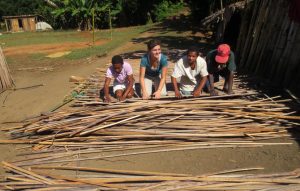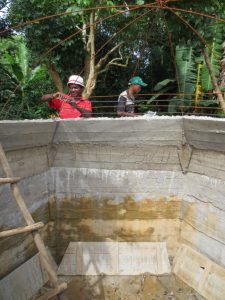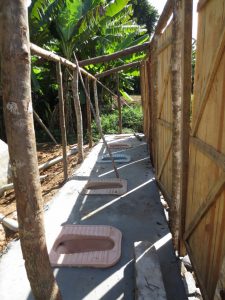This project has been completed under the direction of Peace Corps Volunteer Elizabeth Drouhard.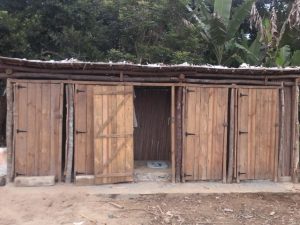
To read about the beginning of the project, CLICK HERE.
The project was to build a public biogas toilet for the community.
Elizabeth reports:
The purpose of this project was to build community biogas toilets in the rural community of Ambonivato, Madagascar. This community is on the East coast of Madagascar, and like most surrounding villages is very poor and had no toilets.
Our objectives were to improve sanitation in the village, create biogas for cooking, and create a valuable fertilizer from the decomposed waste. Biogas is a mixture of gases -mainly methane- that can be captured from anaerobic decomposition of organic waste, and used as cooking fuel.
The community biogas toilets consist of several components: 5 squatting style flush toilets, a biogas digester/sewage tank, a gas-collecting dome, an outlet tank for decomposed waste, and a communal kitchen for cooking with the biogas.
Throughout the construction process, community volunteers and a local sanitation company, Saniteck, worked together to complete the toilets. Community volunteers gave their labor, rocks, and sand. Saniteck donated labor, transportation, toilets, and other materials.
Funds from Water Charity and other donors were used to purchase all other materials, mainly cement, iron rods, planks, and nails.
The building process began with building the cement biogas digester, which is over 25 m3. We then connected the 5 toilets to the biogas digester and built the outlet/decomposed waste tank.
The community then built the structures for the toilets and kitchen using local materials and techniques. Upon completion we tested for water and gas tightness. We ran into some technical issues, and ran over budget.
With the infusion of additional funds, we were able to coat the inside of the biogas digester in paraffin wax diluted with kerosene. We plastered the outside of the biogas digester again with cement mixed with a water-proofing additive. Funds were spent on labor, scaffolding, steel brushes, and blow torch rental.
Thank you to Water Charity, Hack and Slash, and all supplementary donors that made this project possible.
We are grateful to Elizabeth for completing the project, and again extend our thanks to Hack and Slash and to Katrina Drouhard for providing funds for this project and other projects in Madagascar.
